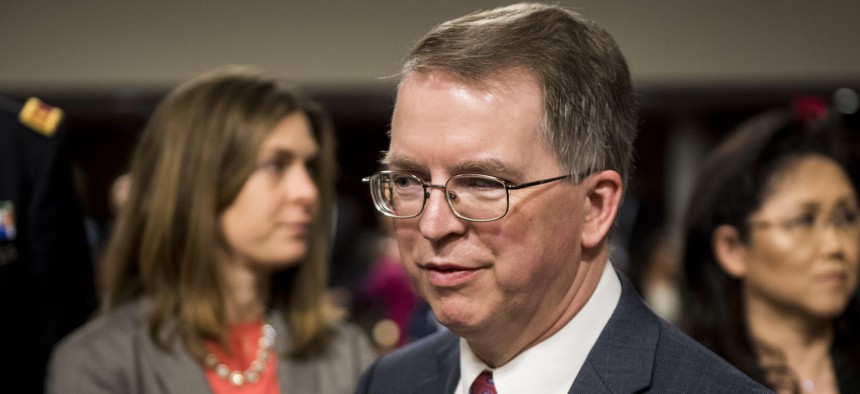Inflation, workforce issues challenge defense contractors amid security pivot

David Norquist, shown here in 2019 as undersecretary of defense, told a House panel this week that inflation and other economic pressures are taking a toll on the defense industry base. Bill Clark/CQ-Roll Call, Inc via Getty Images
The defense industrial base is facing workforce and inflationary headwinds just as the U.S. is refocusing its strategic lens on competition with China and Russia.
The U.S. defense and security establishment is refocusing on great power competition, as Russia's war on Ukraine rages and as China asserts itself as a superpower in the Asia-Pacific region. For the defense industrial base, this challenge is compounded by adverse market conditions, industry officials told the House Armed Services Committee Wednesday.
Some of these challenges – inconsistent appropriations and continuing resolutions – are longstanding but more recently inflationary costs, barriers to market entry, consolidation and workforce challenges are complicating the ability of vendors to execute on the strategic pivot.
National Defense Industrial Association president and CEO David Norquist said at the hearing that an estimated 17,000 companies have left the defense industrial base in the past five years, and that the Defense Department has found a more than 40% decline in the past decade.
"Today, there is a mismatch in what our national strategies aim to achieve and how our defense industrial base is postured," said Nortquist. "For example, we should expect the number of workers in the defense industrial base to be increasing. In 1985, the U.S. had 3 million workers in the defense industry. In 2021, there were 1.1 million workers in the sector and that number is remaining flat."
Recruitment and retention issues and rising wage demands are affecting vendors, as workers are finding opportunities outside of the defense industry. This especially impacts vendors working on fixed-price contracts.
"I think the single biggest issue facing the industry is people and that's going to be the case going forward," said Matthew Paxton, president of the Shipbuilders Council of America.
The lingering effects of the pandemic also led to some workforce attrition, said Eric Fanning, president and CEO of the Aerospace Industries Association, where experienced staff opted for retirement.
And while investment to bolster the talent pipeline for science, technology, engineering and math, or STEM, degrees and jobs is starting to show some returns, Fanning said the gap between open job roles and available talent remains very wide.
"There are encouraging signs, but it's a big hole that we're trying to dig out of and it's compounded now by inflation, particularly on the defense side where there are contracts without adjustments," he said. "Because on the nondefense side — particularly for companies involved in both — they can just move their work, effort and sales over to that side and change their rates. I think we still have a long way to go, and I suspect it's a problem we are going to be focused on for the duration of our lifetimes."
While those challenges remain persistent for contractors, the looming specter of potential spending cuts or freezes being sought by House Republicans as a condition of extending the debt ceiling are also worrying industry executives who are mindful of the sustained impacts from sequestration over the past decade.
"I think we all recognize that deficits are…significant in their consequences, but we've also seen what happens with sequestration and what it does to the Department of Defense and what it does to readiness," Norquist said. "Particularly the cost of trying to come out afterwards, after those readiness and [operations and maintenance] go through. At the end of the day, your national security should be tuned to your mission and requirements."



